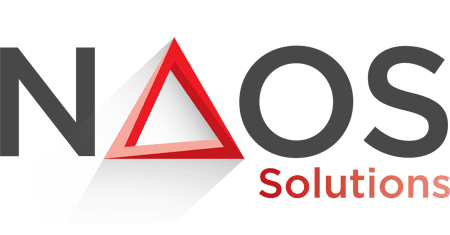Outsourcing your contact center can drive exceptional results—but only if it goes beyond the basics. As Customer Support Directors and CX Managers, you’re not just looking for a vendor. You want a true partner: one that adapts to your goals, reflects your brand, improves your operations at every touchpoint, and maintains the costs under the agreed-upon budget.

This article lays out the seven key practices that distinguish excellent outsourcing partnerships. We’ll explore how to align SLAs, integrate technology, maintain cultural cohesion, and proactively manage performance to elevate your customer service strategy. At NAOS CX, we have developed and refined these principles over the past 15 years through long-term engagements across various industries.
Read on to discover the contact center best practices that can help you outsource customer support with confidence and achieve standout results.
THE FOUNDATION OF CONTACT CENTER BEST PRACTICES: TREAT SLA DESIGN AS A CO-OWNERSHIP EXERCISE
When we translate business objectives into clear KPIs, we ensure that both parties of the partnership work towards the same goal: exceptional and personalized service.
They don’t treat service-level agreements (SLAs) as static documents. They co-develop them with input from both sides to reflect mutual expectations and shared accountability.
That means:
- Involving operational managers and frontline leaders from both companies.
- Using business outcomes (e.g., NPS improvement, reduced AHT) to shape KPIs.
- Reviewing SLAs quarterly to adjust to seasonal shifts or product evolution.

This co-ownership mindset ensures alignment from day one and builds a collaborative foundation for success.
HIGH-PERFORMING OUTSOURCING PARTNERSHIPS DON’T JUST HIRE FOR SKILLS—THEY HIRE FOR BRAND FIT
Operational and cultural alignment is key to an outsourcing venture’s success. Most managers still make the mistake of focusing only on language proficiency and technical skills, but these alone are no longer sufficient in today’s competitive landscape.
High-performance companies lead the industry by ensuring their customer support teams align with the pace, values, and tone of the brand they represent. Cultural alignment extends beyond geography. It’s about how well the outsourced agents embody and represent the brand in every interaction.
One contact center’s best practice is that vendors provide agents with technical training and immerse them in the client’s culture. Many forward-thinking BPOs give agents a deeper understanding of the brand’s mission, tone of voice, language, and service philosophy.
The vendor evaluation model, which was based solely on technical skills and language proficiency, is now outdated. Instead, the selection criteria should focus on cultural compatibility, SLA commitment, and technological readiness.
When evaluating potential partners, look for those who invest time in truly understanding your brand. Their recruitment, onboarding, and training pipelines should reflect your values, not just your KPIs.

Best practices include:
- Running roleplay assessments during recruitment based on brand scenarios.
- Designing onboarding modules around your tone of voice and customer personas.
- Embedding client culture into floor coaching and team rituals.
Only when we control all these parameters can we ensure that the outsourced partner becomes a natural extension of the in-house team (and not a disconnected alien).
BUILD TECH BRIDGES FOR SEAMLESS WORKFLOWS
Technology should connect—not complicate—the relationship. Successful partnerships integrate tools end-to-end to support agility and transparency.
Leading BPOs leverage real-time dashboard capabilities to provide both partners with simultaneous access to performance data, customer feedback, and case statuses. This empowers CX agents and decision-makers to make informed choices while maintaining complete oversight.
High-performing partners often implement a strong knowledge-sharing system. The better the quality assurance framework, the better and more consistent the service delivery, regardless of location. This approach maintains transparency and aligns the outsourced team with the business’s policies and expectations.
Concretely:
- Sync your CRM and ticketing platforms so agents work in one environment.
- Grant API-based access to reporting tools for real-time visibility.
- Use integrated QA tools to consolidate feedback loops.
- Clarify data governance rules upfront.
- Discuss GDPR/CCPA requirements, access rights, and security audits.
It is also essential to consider tool and system interoperability as part of a continuous improvement strategy. System integration is one of the biggest drivers of high-impact customer experiences.
THEY STRUCTURE COMMUNICATION LIKE A PRODUCT TEAM
An efficient contact center partnership understands that communication is no longer a requirement but a core part of the operation. High-performing BPOs design their communication workflow to be agile, intentional, and collaborative.

We need to build a continuous feedback loop, which will become the key driver of improvement within the partnership.
Monthly performance reviews and escalation protocols should become part of the performance reviews, incorporating feedback from agents and leaders. This lifts the barriers in communication and improves responsiveness between the internal and external teams.
Another important element here is escalation mapping. High-performing BPOs do not respond to service disruptions or customer escalations on an ad hoc basis. Instead, they develop well-defined and pressure-tested escalation flows, ensuring issues are resolved and mitigated quickly.
THEY TURN QA INTO A CULTURE, NOT A CHECKLIST
A key differentiator between good and great outsourced customer service is their approach to Quality Assurance. It becomes a continuous, fully integrated process influencing every interaction and decision. These centers go beyond the typical scorecard approach and embrace a culture where feedback and improvement become part of the daily routine.
Rather than waiting weeks to identify performance gaps, these centers gather real-time feedback. The outsourced partners provide immediate and constructive input so the agents can take corrective action on the spot.
This proactive approach creates a culture of continuous improvement. It empowers agents to grow, build confidence, and consistently boost their performance. By integrating quality assurance into every aspect of the operation, high-performing contact centers ensure that feedback drives individual growth and business success.
Another driver of QA partnership is the use of calibration sessions. Regular meetings are conducted to align the client team and the BPO QA leads.

QA calibration sessions should follow a clear agenda:
- Review 3-5 interactions selected from multiple agents.
- Compare evaluations between client QA and BPO QA leads.
- Align on scoring rationale and agree on feedback language.
- Identify coaching opportunities.
- Document takeaways in a shared tracker.
These sessions ensure consistency in evaluations by maintaining the same standard across both teams. With open communication and refined quality benchmarks, calibration sessions help both parties develop an understanding of performance criteria.
This ultimately leads to better business outcomes and, of course, a great customer experience.
THEY BAKE FLEXIBILITY INTO THE PARTNERSHIP MODEL
High-performing partnerships are built on flexible engagement models that evolve with the client’s business. These models help meet seasonal demand, support time-sensitive product launches, and respond to unexpected changes. They allow the partnership to scale, pivot, and realign quickly as needed.
Great BPOs know how to adapt when pressure hits. However, flexibility must be built on planning, not improvisation.

Your outsourcing partner should be able to:
- Scale teams up/down rapidly based on forecasted volumes.
- Provide trained floaters who can jump in during peak days.
- Switch to new workflows or systems within days, not weeks.
But clients have a role too:
- Share product calendars, campaign timelines, and expected seasonality early.
- Define clear escalation protocols for known risks.
- Collaborate on scenario planning (e.g., “What if” playbooks).
Partnership flexibility is a two-way street.
When evaluating a CX center, look beyond its current capabilities and consider how well it can evolve with your business over time.
Red Flags: Signs Your BPO Isn’t Flexible Enough
Here are some signs to watch out for when looking for a BPO partner:
Inflexible Staffing Model
If the outsourced contact center experiences hiring struggles to relocate resources during peak season or demand, it is not the flexible model you need. It should scale up and down very quickly without any impact on service quality as required.
Non-adaptive
If the BPO is slow or takes time to shift its strategy or follow customer expectations, it is a danger to your business. Being adaptable and flexible is crucial; failing to do so will jeopardize your success.
Lack of Communication and Transparency
The BPO should openly discuss the struggles and glitches in their work. They should discuss how to manage new emerging challenges and keep up with business needs. They can’t be trusted to solve these issues in time if they aren’t talking about it.
Delayed Response
We need quick response times and contingency planning in times of crisis and unexpected changes. Any delays can cause disruptions, customer dissatisfaction, or reputational damage. A good BPO should have agile systems to respond quickly, communicate proactively, and adapt operations without compromising service quality.
THEY SHARE IDEAS YOU DIDN’T ASK FOR
Great outsourced CX isn’t afraid to take initiative. They don’t wait to be asked to speak. They look for opportunities and offer strategic input where necessary. In this way, they improve the customer experience and the operational outcomes of the whole system.
Good vendors meet expectations, but great partners anticipate needs.
Proactive outsourcing partners:
- Analyze call trends and suggest script changes.
- Recommend knowledge base improvements based on agent queries.
- Identify emerging customer pain points before they escalate.
You’re in good hands if your partner regularly says, “We noticed this…”. Innovation should be part of the service, not an upsell.
CONCLUSION
The best outsourcing partners go beyond transactions. They immerse themselves in your brand, align with your strategy, and help you adapt in real time.
Following these contact center best practices—from shared SLAs to integrated systems and cultural alignment—sets the foundation for a relationship that truly supports business growth.
Are you seeking a BPO that thinks like a strategic partner, not a service vendor? Contact our experts at NAOS CX to explore how we bring these principles to life in every engagement.

